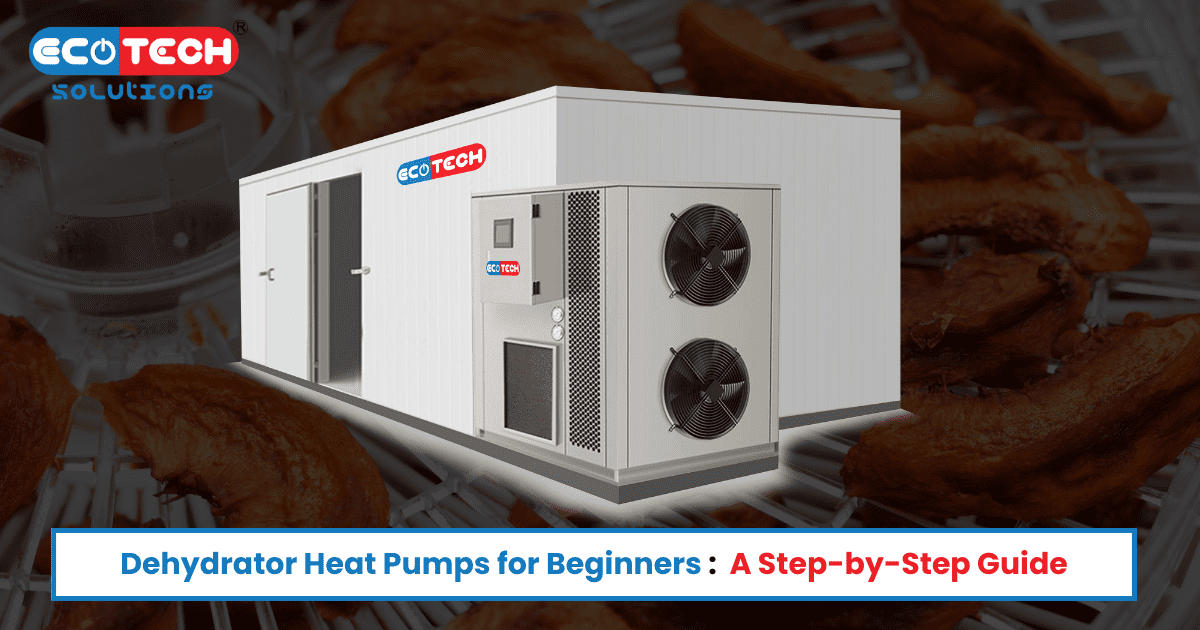If you’re new to dehydrating food and interested in learning how to use dehydrator heat pumps, you’ve come to the right place. Dehydrating food is a great way to preserve fruits, vegetables, and meats for long-term storage. With the help of heat pumps, you can maintain the perfect temperature and airflow to ensure efficient and safe drying of your food. In this step-by-step guide, we’ll walk you through everything you need to know about dehydrator heat pumps and how to use them effectively. Let’s get started!
Understanding the Basics of Heat Pumps
To effectively use dehydrator heat pumps, it’s important to understand the basics of how they work. Heat pumps operate on the principle of transferring heat from one place to another using a refrigerant.
In the case of dehydrator heat pumps, the refrigerant absorbs heat from the surrounding air and then releases it inside the drying chamber. This process creates a consistent temperature and helps remove moisture from the food being dried.
One key feature to consider when selecting a dehydrator with heat pumps is the temperature control. Look for models that offer adjustable temperature settings, as this will allow you to customize the drying process based on the type of food you are dehydrating.
The Benefits of Using Dehydrator Heat Pumps
Dehydrator heat pumps offer several benefits that make them a preferred choice for food drying. One of the main advantages is their energy efficiency. The heat pump technology allows them to transfer heat rather than generate it, making them more efficient than traditional dehydrators.
Additionally, dehydrator heat pumps provide a consistent temperature throughout the drying process. This ensures that the food is dried evenly and thoroughly, reducing the risk of spoilage and improving the quality of the end product.
Another benefit of using dehydrator heat pumps is the versatility they offer. With adjustable temperature settings, you can dry a wide variety of foods, from fruits and vegetables to meats and herbs. This flexibility allows for easy customization and ensures that you can achieve the desired texture and taste in your dried foods.
Step-by-Step Guide: Setting Up Your Dehydrator Heat Pump
Now that we have discussed the benefits of using a dehydrator heat pump, it is time to dive into the step-by-step process of setting up your new appliance. Follow these instructions carefully to ensure that your dehydrator is properly installed and ready to use.
Find a suitable location: Choose a well-ventilated area with enough space to accommodate the dehydrator. Avoid placing it near flammable materials or in direct sunlight, as this can affect its performance.
Assemble the dehydrator: Read the manufacturer’s instructions to assemble the dehydrator. Make sure all the parts are securely in place before proceeding.
Clean the trays: Wash the trays with warm water and mild soap to remove any dust or residue. Rinse thoroughly and let them air dry.
Arrange the food: Place the food you want to dehydrate on the trays. Ensure that there is enough space between each piece for proper air circulation.
Set the temperature and timer: Adjust the temperature and timer settings according to the specific requirements of the food you are drying. Refer to the user manual or recipe guidelines for recommended settings.
Start the dehydrator: Plug in the dehydrator and power it on. The heat pump will begin to transfer heat, and the drying process will commence.
Monitor the progress: Regularly check on the food to ensure that it is drying evenly. Rotate the trays if necessary, so that all the food receives equal heat exposure.
Complete the drying process: Once the food is fully dehydrated, turn off the dehydrator and allow it to cool down before removing the trays.
By following these step-by-step instructions, you can set up your dehydrator heat pump with ease. Stay tuned for the next section, where we will discuss tips and techniques for optimizing the drying process and achieving the best results.
Proper Maintenance and Care for Long-lasting Performance
Proper maintenance and care are essential for ensuring the long-lasting performance of your dehydrator heat pump. Follow these tips to keep your appliance in top shape:
Regular cleaning: After each use, make sure to clean the trays, racks, and other parts of the dehydrator. Use warm water and mild dish soap to remove any food residue or stains. Dry them thoroughly before reassembling the unit.
Clean the air intake and exhaust vents: Over time, dust and debris can accumulate on the air intake and exhaust vents, affecting the efficiency of the dehydrator. Use a soft brush or a vacuum cleaner to remove any buildup and ensure proper airflow.
Check the fan and motor: Inspect the fan and motor periodically to make sure they are clean and free from any obstructions. If you notice any unusual noises or vibrations, contact the manufacturer for further assistance.
Store properly: When you are not using the dehydrator, store it in a clean and dry place. Avoid exposing it to extreme temperatures or humidity, as this can damage the appliance.
Perform regular maintenance checks: Refer to the manufacturer’s instructions for any specific maintenance tasks recommended for your dehydrator. This may include replacing filters, lubricating moving parts, or checking the electrical connections.
By following these maintenance tips, you can ensure that your dehydrator heat pump performs optimally for years to come. In the next section, we will explore different types of foods that are ideal for dehydrating and provide some delicious recipes to try. Stay tuned!
Troubleshooting Common Issues with Dehydrator Heat Pumps
While proper maintenance can go a long way in preventing problems with your dehydrator heat pump, sometimes issues can still arise. Here are some common problems you may encounter with your appliance and how to troubleshoot them:
Uneven drying: If you notice that some foods are drying faster than others, it may be due to uneven air circulation. Try rotating the trays halfway through the drying process or rearranging the food placement to ensure even drying.
Excessive moisture: If your fruits or vegetables are coming out too moist, it could be a sign that your dehydrator is not reaching the desired temperature or that the air vents are blocked. Double-check the temperature settings and make sure the vents are clear of any obstructions.
Overheating: An overheating dehydrator could be caused by an overloaded unit or a faulty thermostat. Make sure you are not overcrowding the trays and test the temperature using an external thermometer. If the problem persists, consult the manufacturer for possible repairs.
By addressing these common issues, you can troubleshoot and resolve any problems with your dehydrator heat pump, ensuring optimal results with every use. In the following section, we will delve into some versatile ingredients that are perfect for dehydrating, along with creative ways to use them in your culinary ventures.
By following these steps, you can start your journey with dehydrator heat pumps and enjoy the benefits of preserving and enjoying a variety of dehydrated foods. As you gain experience, you’ll discover numerous creative ways to incorporate dehydrated ingredients into your meals and snacks.


